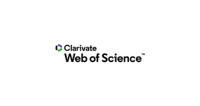CICATRIZAÇÃO CUTÂNEA POR SEGUNDA INTENÇÃO EM EQÜINOS TRATADOS COM VEDAPROFENO
DOI:
https://doi.org/10.5380/avs.v9i1.4051Palavras-chave:
cicatrização, pele, vedaprofeno, eqüinos, wound healing, vedaprofen, horses.Resumo
Com o objetivo de avaliar-se possíveis efeitos do vedaprofeno sobre a cicatrização de pele em eqüinos, realizaram-se lesões circulares de pele padronizadas com punch de 2 cm, nas regiões lombares direita e esquerda de 14 eqüinos. Estes dois últimos foram divididos em dois grupos, os quais receberam tratamento local diário com líquido de Dakin. Sete animais foram tratados com 2 mg/kg de vedaprofeno (grupo vedaprofeno) via oral, duas vezes ao dia, durante dez dias e, sete animais do grupo controle não receberam tratamento. Em todos os cavalos, as lesões do lado direito foram avaliadas macroscopicamente e por planimetria a cada seis dias e, as feridas do lado esquerdo foram analisadas por material para histopatologia no sexto e 15º dias de tratamento. Comparativamente, as lesões dos animais tratados com vedaprofeno mostraram-se secas e sem edema perilesional e as feridas controle apresentaram maior retração centrípeta. O tempo total de cicatrização não diferiu, variando entre 28 e 39 dias (média 32,86) nos animais do grupo vedaprofeno e entre 26 e 39 dias nos animais do grupo controle (média 31,71). Nos exames histopatológicos ocorreu diferença entre os grupos quanto à epitelização presente observada com maior freqüência no grupo controle. O vedaprofeno diminuiu a retração e epitelização da ferida com redução da fase exsudativa e do edema, entretanto, sem interferir no tempo total de cicatrização.
Second intention skin wound healing in equines under vedaprofen treatment
Abstract
The aim of this study was to evaluate the effects vedaprofen of on equine skin wound healing. Circular skin lesions using a 2 cm punch were induced on right and left lumbar regions in 14 equines. The animals were divided into two groups and the wounds received daily topic treatment with Dakin solution. Seven horses (vedaprofen group) were treated with vedaprofen (2mg/kg PO BID) for 10 days, and seven (control group) were not treated. All animals had right side wounds evaluated by macroscopic examination and planimetry each 6 days and the left side wounds were submitted to histopathological studies at the 6th and 15th post-treatment days. The wounds of vedaprofene group showed drier lesions without edema when compared to the control groups wounds, which displayed more centripetal retraction.The total healing period was similar in both groups, with 28 and 39 days (average 32.86) in the vedaprofen group and 26 and 39 days (average 31.71) in the control group. The epithelial recovery was evaluated by histopathological examinations and was more often seen in the control group. The vedaprofen diminished the retraction and epithelial recovery of the wound, but did not interfere in the total period of healing with reduction of exsudative phase and edema.
Downloads
Como Citar
Edição
Seção
Licença
Autores que publicam nesta revista concordam com os seguintes termos:
- Autores mantém os direitos autorais e concedem à revista o direito de primeira publicação, com o trabalho simultaneamente licenciado sob a Creative Commons - Atribuição 4.0 Internacional que permite o compartilhamento do trabalho com reconhecimento da autoria e publicação inicial nesta revista.
- Autores têm autorização para assumir contratos adicionais separadamente, para distribuição não-exclusiva da versão do trabalho publicada nesta revista (ex.: publicar em repositório institucional ou como capítulo de livro), com reconhecimento de autoria e publicação inicial nesta revista.
- Autores têm permissão e são estimulados a publicar e distribuir seu trabalho online (ex.: em repositórios institucionais ou na sua página pessoal) a qualquer ponto antes ou durante o processo editorial, já que isso pode gerar alterações produtivas, bem como aumentar o impacto e a citação do trabalho publicado.













